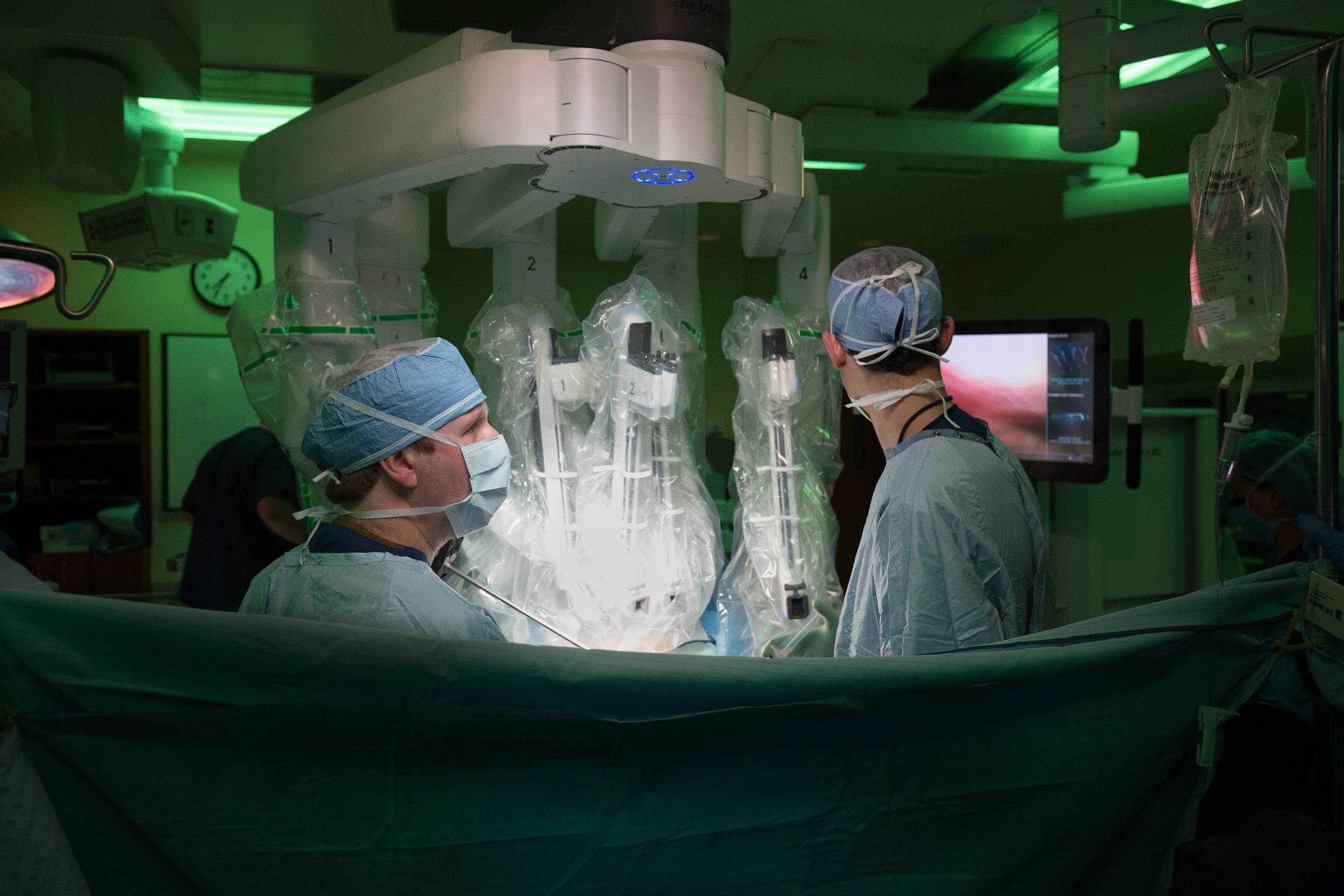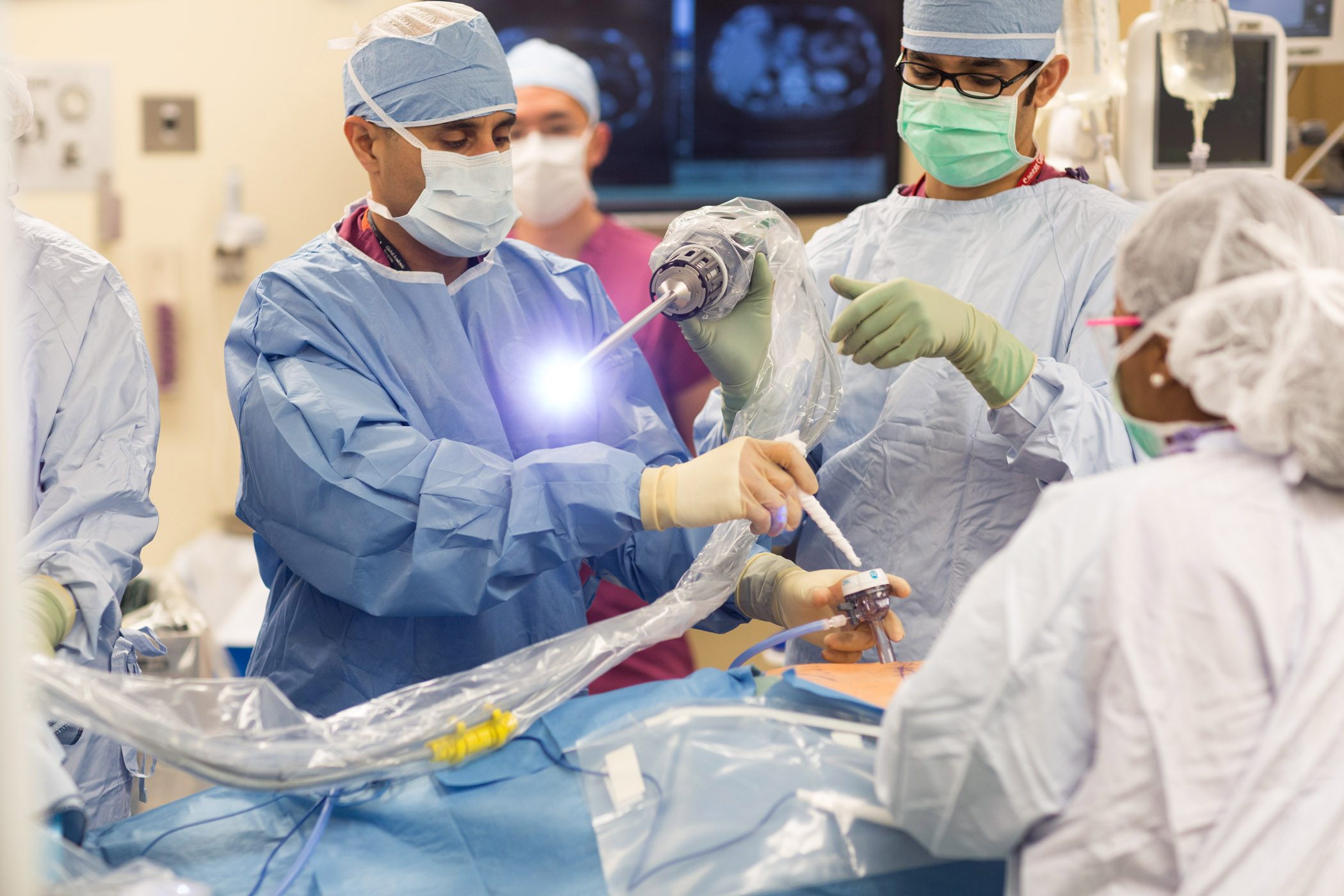- Departments, Labs and Institutes
- Research Centers and Programs
- Minimally Invasive New Technology in Oncologic Surgery
Minimally Invasive New Technology in Oncologic Surgery (MINTOS) seeks to enhance the care of patients with cancer by promoting safe, effective and innovative applications of minimally invasive surgery and novel technologies for the delivery of oncologic surgery.
MINTOS is composed of a team of multidisciplinary surgeons within the Surgery Division at MD Anderson. The program was established in 2006 by Surena Matin, M.D., and is under the leadership of Hop Tran Cao, M.D., medical director, and David Rice, M.D., associate medical director.
The four pillars of MINTOS are:
- Clinical Operations
- Safety and Quality Assurance Oversight
- Research and Innovation
- Education
Contact Information
Mailing Address
MINTOS Program
1400 Pressler St., Unit 1447
Houston, TX 77030
Location
Pickens Academic Tower
FCT10.5020
Four pillars of MINTOS
Clinical Operations
Clinical operations plays a pivotal role in the efficient functioning of MINTOS by exploring various aspects, such as the analysis of trends and outcomes, resource allocations and infrastructure needs. This comprehensive approach aims to enhance the overall quality of patient care, optimize operational processes and ensure the seamless delivery of state-of-the-art minimally invasive oncologic surgery.
Robotic assisted surgery has steadily become the mainstay for complex minimally invasive cancer surgery at MD Anderson Cancer Center, with more than 2,000 cases being performed in 2023 using the da Vinci surgical robot. Although the miniaturized robotic instruments perform the actual surgery through tiny access incisions, they still require continuous direct input from the surgeon and are not autonomous in any way. Candidates for robotic-assisted surgery include many patients undergoing urologic, gynecologic, abdominal and thoracic procedures, and head and neck surgeries. Patients interested in exploring robotic surgery at MD Anderson should schedule an appointment with one of our surgeons.
Safety and Quality Oversight
The Safety and Quality Oversight pillar supports the broader framework of our minimally invasive surgery platform with a primary mission to standardize credentialing and recredentialing processes, contribute to quality assurance and accountability, and ensure the safe and effective delivery of minimally invasive procedures. This strategic approach helps foster a culture of excellence, safety, accountability and patient-centric care.
Research and Innovation
A dynamic force is driving the advancement of not only robotic surgery but also other new technologies that continually transform the delivery surgical care within the operating room. Recent examples include single-port robotic surgery, robotic endoscopy and intraoperative molecular imaging. Central to this pillar is a commitment to advancing procedural development, which involves multidisciplinary collaboration across surgical departments.
Education
MINTOS provides a multifaceted approach that includes simulations, online training modules, hands-on training labs and collaborative efforts with the Division of Surgery Education Program directors. By leveraging innovative educational curricula, this pillar aims to provide our surgeons, trainees and allied staff with the knowledge, skills and proficiency necessary to provide cutting-edge surgical care.
MINTOS stories

Histotripsy for liver cancer: What to know about this novel cancer treatment

Tongue cancer survivor thriving after minimally invasive surgery

Prostatectomy: What to expect

Robotic surgery for cancer treatment: What patients should know

Advancing futuristic technology in oncology surgery today

